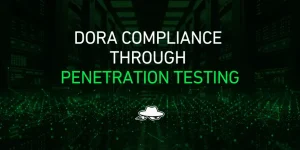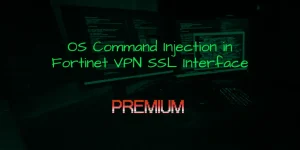How Companies Risk Security for Compliance Comfort in Pentesting

Reading Time: 5 Minutes
Introduction
Penetration testing, or pentesting, is the “efforts to identify and rectify exploitable vulnerabilities in a system and secure concealed attacks.” In other words, pentesting involves deliberately probing programs for software vulnerabilities and thereafter exploiting them. These vulnerabilities may exist in operating systems, service and application flaws, improper configurations, or risky end-user behavior.
Pentesting is typically conducted in a controlled environment to prevent any actual security breaches and to identify weaknesses before malicious attackers can discover and exploit them.
Purpose of Penetration Testing
Organizations engage in Pentesting primarily to strengthen their security posture. It enables companies to discover and rectify vulnerabilities before threat actors can exploit them, which mitigates potential security breaches that could lead to huge financial losses and criminal penalties. However, Pentesting not only enhances security but is also a compliance requirement; ensuring that organizations meet specific security standards mandated by laws or industry regulations.

Compliance-Driven Penetration Testing vs. Security-Driven
While the focus of all Pentesting efforts is to increase the level of security in the organization, the methodology may vary depending on whether compliance is the primary driver or security enhancement is. In other words, compliance-based testing is characterized by a strict structure tied to the specific requirements of regulatory standards, which serve as a guiding framework. For example, in health-related fields, testing may be limited to HIPAA requirements or, in the case of payment card processing, be limited to PCI DSS. The same applies to the EU GDPR as a data protection regulation. At the same time, security-driven Pentesting is more comprehensive and unbound since the main objective is to test the organization’s strength in all possible threats. Thus, prioritizing security-driven testing over mere compliance ensures the identification of certain hidden vulnerabilities that standard compliance checks might overlook. For instance, employing advanced penetration techniques such as fuzzing—where testers input massive amounts of random data into systems to cause them to crash—can reveal how robust a system is against unexpected and chaotic inputs. This type of testing might uncover critical buffer overflow vulnerabilities or unexpected error handling flaws that would not typically be checked under standard compliance-focused tests but could prove catastrophic if exploited by malicious actors.
Understanding Compliance Requirements
Common Compliance Frameworks and Their Penetration Testing Requirements
PCI DSS (Payment Card Industry Data Security Standard)
PCI DSS mandates regular pentesting for entities handling card transactions to protect cardholder data. It specifies that penetration tests for both the network and application layers must be performed at least annually or after major changes to the cardholder data environment . This must cover all critical systems and aim to identify and remediate all issues .
HIPAA (Health Insurance Portability and Accountability Act)
While HIPAA does not explicitly require penetration testing, it is highly recommended as part of the security management process for entities handling protected health information (PHI). Ideally, the scope of the pentest should encompass all the systems where PHI is accessed, stored, and transmitted.
GDPR (General Data Protection Regulation)
GDPR mandates that organizations protect personal data with appropriate technical and organizational measures, which includes regular testing and assessments of these security measures. Although not explicitly requiring penetration testing, GDPR encourages it as part of ensuring data protection, especially in environments where data processing presents high risks to data subjects’ rights and freedoms
ISO 27001 (International Standard on requirements for information security management)
ISO 27001 is a global standard for managing information security within an organization, guiding the establishment and maintenance of an Information Security Management System (ISMS). Although it doesn’t specifically mandate penetration testing, it supports using such assessments within its framework to manage risks effectively. Organizations are encouraged to perform regular risk assessments, including penetration testing, to identify and address vulnerabilities. These tests can validate the effectiveness of implemented security controls and are crucial for the ongoing improvement process required by ISO 27001. By integrating penetration testing, companies can enhance their security measures, ensure compliance with the standard, and demonstrate a robust commitment to protecting sensitive data.
See Also: Solutions: Web Application Pentesting
The Role of Penetration Testing in Security Enhancement
Going Beyond Compliance Requirements
Penetration testing serves a critical role in cybersecurity that extends well beyond the basic compliance with regulatory frameworks. While compliance-driven pentests are designed to meet specific legal requirements and ensure that organizations pass their regulatory audits, security-driven pentests delve deeper. They are conducted not just to check off compliance requirements but to actively find and fix vulnerabilities that could be exploited by attackers. This type of testing challenges the existing security measures more rigorously, seeking to uncover weak points that compliance audits might not specifically target.
Uncovering Non-Compliance Security Issues
Penetration testing can reveal security vulnerabilities that are not necessarily on any compliance checklist but are crucial for maintaining robust cybersecurity.
For instance:
- Zero-Day Vulnerabilities: These are previously unknown vulnerabilities for which there is no available patch. Pentesting can help discover such vulnerabilities before they are exploited by malicious actors.
- Insider Threats: By simulating attacks that might be carried out by someone within the organization, Pentesting can help identify potential routes an insider might take to access sensitive information.
- Chain Vulnerabilities: Sometimes, individual vulnerabilities may not seem critical but can lead to significant breaches when exploited in combination. Pentesting can uncover these complex chains of weaknesses.
- Business Logic Errors: These are issues in the way application logic is implemented, which might allow users to perform unintended actions. Such problems are often overlooked in standard compliance checks.
Role of Ethical Hackers and Security Professionals
Ethical hackers and security professionals are vital to the real-world attack simulation process because of the actual techniques they use. As individuals, ethical hackers legally use different attack vectors, such as social engineering, physical security breach, and advanced persistent threats to determine how well the organization’s defense mechanisms fare against an attack from an actual attacker. Such testing is always a wake-up call to the organization, as the simulation qualifies it to be generally prepared against attacks. In addition, security personnel can assist in enlightening the organization on the potential threats and the need for opt protection.
Security professionals also help in educating the organization about potential threats and in training employees to be vigilant about security, which is often beyond the scope of compliance requirements.
In essence, while compliance ensures that an organization conforms to a set of defined standards, penetration testing surpasses them, ensuring that a complete and thorough picture of the security level preparedness is obtained. In all its aspects, the two-sided methodology guarantees that they are not just adhered to, but really protected from all sorts of cyber threats.
Case Study: Incident response and compliance: A case study of the recent attacks by Jeff Tutton
The case study emphasizes the critical limitations of relying solely on compliance standards like PCI-DSS for organizational security.
It highlights the following key points:
- Scope of Compliance Standards: PCI-DSS is primarily focused on credit card data protection, potentially leading organizations to overlook other critical and sensitive data and systems that are not covered by these standards.
- Check-Box Approach: The reliance on check-box assessments through Qualified Security Assessors can result in a superficial review process that might miss broader security needs and specific threats, treating compliance as a routine task rather than an in-depth security assessment.
- Balancing Resources: The study underscores the dilemma organizations face in allocating limited resources. It questions whether focusing on compliance might detract from addressing broader security needs, thus potentially leaving other areas vulnerable.
- Incident Response: A major vulnerability is the lack of thorough incident response planning and practice. The study stresses that organizations often fail to practice their response to incidents adequately, which can lead to ineffective and chaotic responses when real breaches occur.
- Awareness of External Factors: It also highlights the importance of understanding the political and external environments that could increase an organization’s risk of being targeted by attacks.
Compliance-driven security checks often focus narrowly on specific regulatory requirements, which can leave other critical vulnerabilities unaddressed.
Consider a scenario where a financial services company performs routine compliance-driven penetration tests strictly adhering to PCI DSS requirements. These tests primarily focus on surface vulnerabilities in payment systems. However, imagine a subsequent, more comprehensive security-driven Pentesting uncovers a zero-day vulnerability in third-party software, not included in the compliance checklist, which could allow unauthorized access to sensitive customer data.
Compliance-driven security checks can sometimes focus too narrowly, missing critical vulnerabilities that broader security assessments might uncover. Such cases emphasize the need for a more comprehensive approach to security testing that goes beyond mere compliance to ensure robust protection against diverse and evolving threats.
Integrating Penetration Testing into a Security Strategy
Strategies for Integrating Regular Penetration Testing
To effectively incorporate penetration testing within an enterprise’s security measures, it’s essential to adopt a structured methodology that complements the overarching security goals and risk management tactics. Consider these approaches:
- Consistent Testing Timelines: Establish a consistent timetable for conducting penetration tests, which surpasses mere compliance mandates. Depending on the organization’s risk disposition and data sensitivity, this could be on an annual, semi-annual, or quarterly basis.
- Diverse Testing Scopes: Rotate the penetration testing scope to encompass various elements of the IT setup, including network infrastructures, software applications, and end-point systems. This rotation ensures comprehensive testing of different systems periodically. Make sure to request Internal Pentesting as well, so you can assess what happens should a breach already take place, what sort of sensitive information can be extracted internally?
- Realistic Cyberattack Simulations: Engage in red team exercises where ethical hackers emulate actual cyber threats to gauge the robustness of both physical and digital security measures.
- Integrated Incident Response: Merge the insights garnered from penetration tests with existing incident response strategies. Utilize these insights to enhance the training of response teams and fortify the organization’s capability to manage security breaches swiftly and effectively.
- Utilization of Varied Tools and Techniques: Apply a broad spectrum of tools and techniques in penetration testing to identify a diverse range of vulnerabilities. This might include the use of automated scanners, hands-on testing methods, and bespoke scripts designed for specific environments.
Continuous Security Improvement vs. Compliance Checkboxes
Integrating Pentesting into an ongoing security strategy emphasizes continuous improvement, moving beyond the checkbox approach of compliance:
- Proactive Security Posture: Regular Pentesting fosters a proactive security posture where threats are identified and mitigated before they can be exploited by attackers. This approach is dynamic and adaptive, unlike the static nature of compliance checklists.
- Feedback Loops: Continuous improvement involves setting up feedback loops where the results from Pentesting are analyzed and used to refine security policies, procedures, and controls. This iterative process helps in constantly enhancing the security measures in place.
- Cultural Shift: Shifting from a compliance-focused to a security-focused mindset requires a cultural change within the organization. Security becomes everyone’s responsibility, not just a requirement to be fulfilled by the IT department.
Challenges and Considerations in Penetration Testing
Balancing Compliance and Security-Focused Penetration Testing
Balancing the demands of compliance and the broader needs of security-focused penetration testing poses several challenges:
- Scope Limitation: Compliance-driven tests are often limited to checking the boxes required by regulations, which may overlook broader security vulnerabilities. Expanding the scope to a more security-focused approach can strain resources but is necessary for comprehensive protection.
- Frequency and Depth: Compliance mandates typically require annual tests, but for robust security, more frequent and in-depth testing might be necessary. Adjusting the frequency and depth of tests to better manage risk can be challenging, especially when trying to align with budget constraints.
- Regulatory Focus Shift: Regulations can change, requiring adjustments in compliance strategies. Organizations must stay agile to adapt their Pentesting practices to new compliance requirements without losing focus on broader cybersecurity goals.
Conclusion: Enhancing Security Through Strategic Penetration Testing
The multifaceted role of Pentesting in strengthening organizational security is far beyond mere compliance. We’ve seen how Pentesting proactively identifies and rectifies exploitable vulnerabilities across various systems—ranging from operating systems to end-user behaviors—thereby safeguarding against potential cyber threats. While compliance-driven Pentesting satisfies regulatory requirements by adhering to specific frameworks such as PCI DSS, HIPAA, GDPR, and ISO 27001, security-driven Pentesting delves deeper to expose and mitigate vulnerabilities that standard compliance checks might overlook.
Aligning Penetration Testing with Security and Compliance Needs
To truly protect their assets and data, organizations must align Pentesting activities with both compliance requirements and broader security objectives. This integrated approach involves regular and comprehensive testing, adoption of varied testing scopes, and continuous improvement of security practices. Businesses are urged to invest in skilled personnel, advanced tools, and to choose the right Pentesting team or vendor that aligns with their security culture and objectives. By doing so, they can ensure a robust security posture that not only meets but exceeds regulatory standards, thus maintaining trust and safeguarding against future vulnerabilities.
In conclusion, while compliance provides a necessary framework for security, it should not be the endpoint. The ultimate aim is a resilient, proactive security posture that utilizes Pentesting as a critical tool for continuous security enhancement. Organizations that embrace this comprehensive approach to cybersecurity are better positioned to respond to and recover from cyber threats, thereby ensuring long-term protection and stability.
Are you looking for a better way to secure your business? Whether you need a product audit, vendor security assessment, or overall security testing, we can help. Our team of experts will work with you to identify your specific security needs and provide tailored recommendations to improve your overall security posture.
To find out more about how Black Hat Ethical Hacking can help you, check out our Solutions







